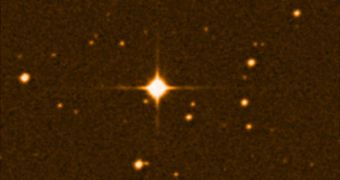Though further studies may be needed to validate the discovery, astronomers are convinced that they have discovered the Holy Grail of exoplanetary research – an Earth like planet revolving around another star.
The existence of such cosmic bodies has been hypothesized ever since the first exoplanets were discovered. Despite the size these behemoths had, experts believed that Earth-like planets were a possibility.
The reason why discovering exoplanets similar to our own is so important is fairly simple. Scientists say that, if the conditions necessary for life were reunited on Earth, they could be as well on planets that are subjected to similar circumstances.
These include a certain proximity (or distance, depending on the point of reference) to the parent star, being inscribed in a habitability zone, having a size and mass similar to Earth's and so on.
The habitable zone around a star is the area around the cosmic object in which temperatures are just right to allow for the existence of liquid water.
Earth is located right in the middle of such a zone, whereas Mars and Venus are not. While the former is too cold to support liquid water on its surface, the latter is too hot to do the same.
The recently-discovered planet that may fulfill most if not all of the condition stated above is called Gliese 581g, and is located in the star system surrounding the star Gliese 581.
This particular system is well known to astronomers and the general public alike, because of its similarities to our own. Though the parent star there is a red dwarf, it is surrounded by six planets.
But Gliese 581g might make even more headlines, given that it's located in the habitable zone around its star. It is also fairly slim, weighing in at just three Earth masses.
Calculations have shown that the planet orbits its star once every 37 days (as opposed to the 365 days it takes for Earth to do so), and that temperatures on the surface vary between -4 degrees Celsius and 71 degrees Celsius.
Planetary scientists believe that the level of gravity present on the planet would not be very different from that life is subjected to here on Earth. This means that humans could effortlessly walk upright on the surface of Gliese 581g.
However, it may be that strong tidal forces are not allowing to planet to rotate very much around its axis. This means that some areas of the planet may remain in perpetual darkness.
The exoplanet was discovered using the Hawaii-based W. M. Keck Observatory. The discovery of the planet in itself is not new, but the new study is what allowed experts to gain such detailed knowledge of Gliese 581g's properties.

 14 DAY TRIAL //
14 DAY TRIAL //